Calculus is a field of mathematics that focuses on the computation of instantaneous rates of change and the accumulation of an infinite number of minor elements to find some total. Calculus was independently invented in the 17th century by two mathematicians: Gottfried Wilhelm Leibniz of Germany and Isaac Newton of England. Both of these geniuses share credit for the development of calculus.
Calculus currently requires coursework for students who want to major in physics, chemistry, biology, economics, finance, or actuarial science. This makes calculus the entry-level prerequisite for these fields. Calculus allows for the solution of a wide variety of problems, including monitoring the location of a space shuttle and forecasting the pressure that will build up behind a dam as the water level increases.
Calculus problems, which were long thought to be impossible to solve, may now be accomplished with computers, which are great tools.
Calculus is a complex subject when taught at the university level; however, you do not need to know all of the calculus; you need to master a select few words and techniques related to numerical function optimization, which is essential to fitting algorithms such as neural networks. In addition, reading books is the most effective technique to get an understanding of calculus. [1]
History of the Calculus and Its Conceptual Development
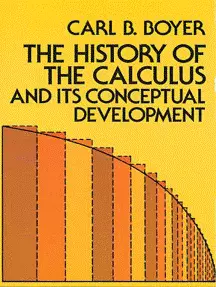
This book presents, for the first time, a complete description of the historical evolution of one of the most significant happenings of the human intellect—calculus—and it does so in a way that is accessible to both non-mathematicians and mathematicians.
But although it is impossible to overstate the significance of calculus and mathematical analysis — the fundamental building blocks of contemporary mathematics — the relevance of this first thorough critical history of calculus extends well beyond the scope of the subject matter itself. [2]
This book will completely dispel the widespread misconception of non-mathematicians and even many mathematicians that mathematics’ most significant accomplishments have always existed in their present, complete form.
It will help readers understand mathematics not as a set of procedures but rather as a way of thinking, and it will act as a bridge between the scientific world and the academic world of the humanities.
Calculus In 5 Hours
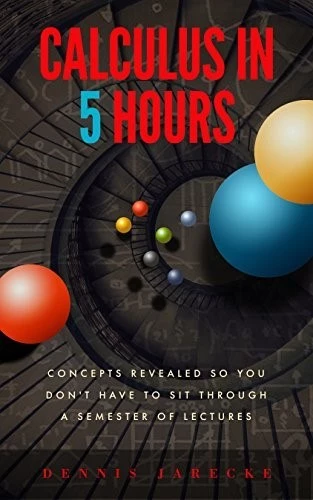
Calculus may be complicated for students to grasp, especially when it’s their first time taking the subject. Students are unduly frustrated and overwhelmed by the fact that the introduction to this significant topic in many popular textbooks reaches an astounding one thousand pages, making the situation worse.
Calculus in 5 Hours will provide you the self-assurance you need to succeed in the subject in around 124 pages. You may not be mindful of it, but you have a higher IQ than you give yourself credit. The issue is that the required texts provide in-depth discussions of each proof and theorem in Calculus.
Differential Equations with Applications
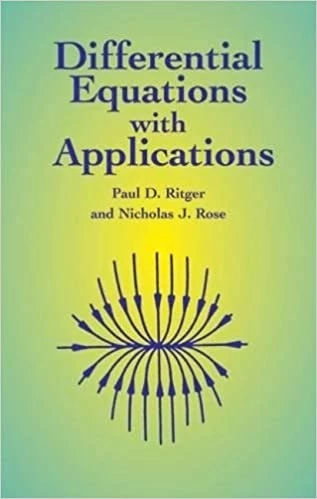
This book is unlike other math books since it is based on a student’s class notes that were reviewed and revised by the instructor of the course the student took! As a result, this book is organized and presented in a manner that teaches the subject matter with a series of thorough examples, progressing in the level of complexity from the most basic to the most advanced.
The approaches to the solutions are generalized and straightforward; step-by-step processes are stated and used to handle various issues, ranging from the most basic to the most complex. Every subject is broken down into digestible chunks and organized to make it easy for the reader to grasp the essential ideas and the connections between various topics.
The Calculus Story

Calculus is an essential tool in a significant portion of today’s science and engineering. Calculus is the mathematical approach for analyzing things that change. Given that in the natural world, we are encircled by change, the invention of calculus was a significant achievement in the history of mathematics.
But in addition to that, it is also somewhat of a mathematical adventure, mainly because infinity is involved in practically every twist and turn… In his book “The Calculus Story,” David Acheson paints a comprehensive picture of calculus and its uses throughout history, beginning in ancient Greece and continuing to the present day.
He presents the individuals who contributed to developing our knowledge of calculus by drawing on the texts they initially produced. He walks through the process of starting with calculus from the beginning, using a systematic and sequential approach.
Kronecker Products and Matrix Calculus with Applications
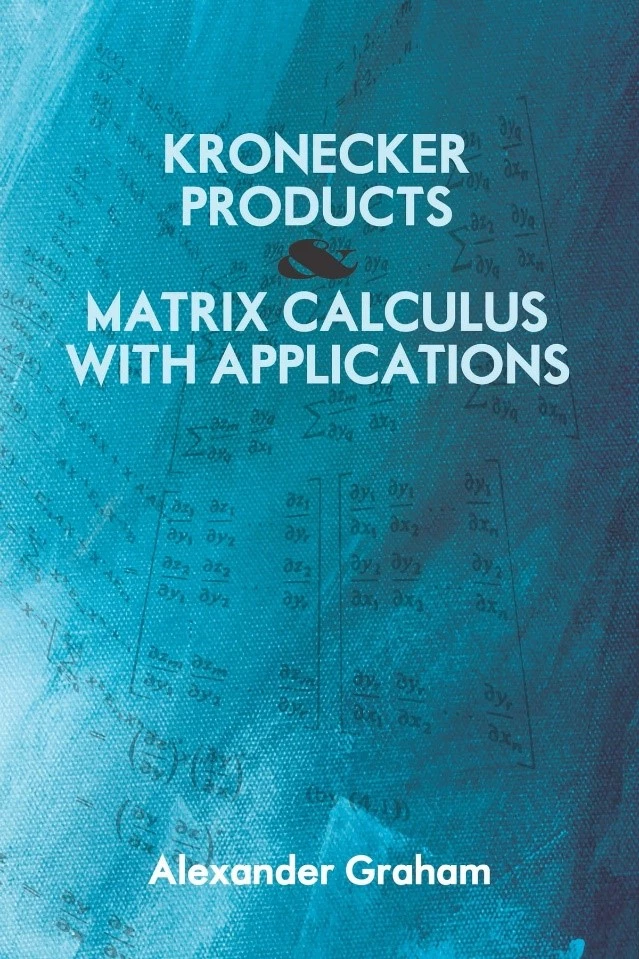
This comprehensive book examines the Kronecker matrix product, and it includes several practical examples, in addition to problems and their answers. The Kronecker product is a matrix operation that is becoming more relevant and helpful, as well as an area of matrix calculus with several applications.
It was named after Leopold Kronecker, a German mathematician who worked in the 19th century. At the undergraduate level, this article offerings a significant amount of material previously only accessible in specialist books and publications that were difficult to locate.
The approach begins with an overview of the Kronecker product and then moves on to analyze its many applications after the preliminary material presented in the first chapter.
After providing an overview of matrix calculus, the following section dives further into the topic and explores its applications, including using Kronecker products. In the concluding chapters, the derivative of a matrix and specific applications of matrix calculus are discussed. The work comes to a close with answers to the questions found after each chapter and valuable tables of formulas and derivatives.
Brief Calculus An Applied Approach
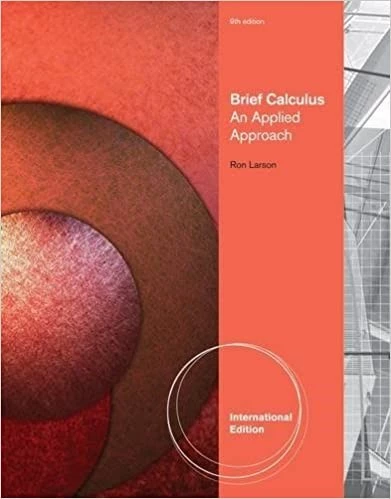
Motivating students while simultaneously encouraging comprehension and mastery is the goal of BRIEF CALCULUS: AN APPLIED APPROACH. This concise book emphasizes integrated and exciting applications that demonstrate to readers the subjects’ and ideas’ applicability to real-world situations.
Extra instruction and practice are provided through various pedagogical tools, ranging from basic algebra refreshers to study advice. The eighth edition expands upon the previous edition’s application-focused approach with newly revised exercises and updated examples.
Applied issues taken from government sources, industry, current events, and other fields give well-rounded examples and appeal to various interests.
Calculus for Middle Schoolers

Calculus for Middle Schoolers is written in a style that is simple to understand, interesting, and humorous, and it guides students through the fundamental ideas of pre-calculus and calculus. Middle school students already have the resources necessary to do essential calculus, and this book gives them the confidence to do so.
The explanations of each topic are followed by problems that provide detailed descriptions of the solutions and the actions needed to arrive at those answers. Students will acquire knowledge and confidence that will give them an advantage when they study more in-depth calculus in high school and college if they obtain a head start on the subject by being acquainted with these ideas and techniques as early as possible.
An Introduction to Functional Programming Through Lambda Calculus
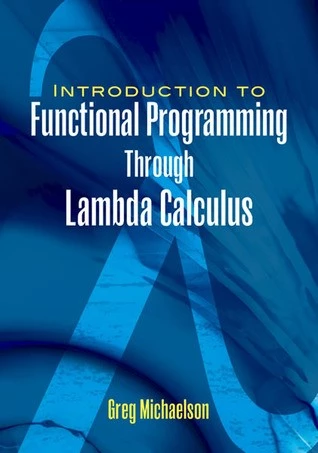
Lambda calculus, the foundation of functional programming and a minor programming language, is where functional programming started. Mathematics and computer science students will find that this well-respected work provides an approachable introduction to the principles and methods of available programming.
The approach is as simple as is humanly feasible, and it makes no assumptions about the reader’s previous understanding of mathematics or functional programming.
Compelling examples illuminate the fundamental principles, and the book is peppered with various activities reinforcing the most important concepts. All issues contain comprehensive solutions.
Complex Analysis and Differential Equations
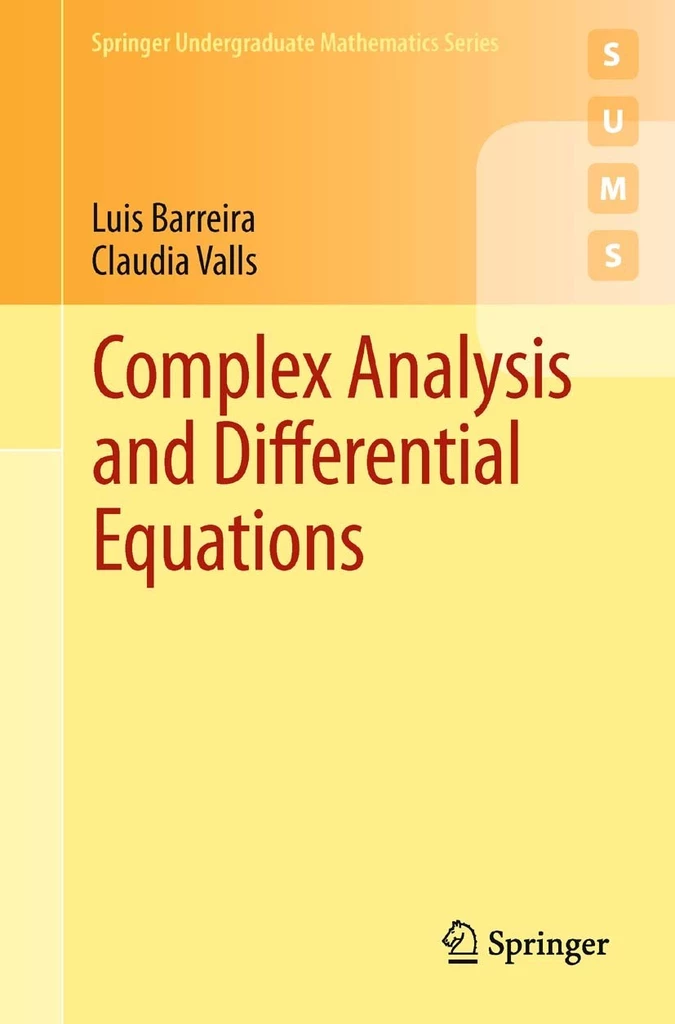
This work offers a complete introduction to the complicated analysis and differential equations that are easy to understand, self-contained, and rigorous. Holomorphic functions, Fourier series, ordinary and partial differential equations, and other topics will be discussed throughout this course.
The book’s content is divided into two sections: the first discusses differential equations, and the second delves into complicated analysis. Because each team may be read independently, this material is equivalent to having two volumes in one.
The use of complex analysis in differential equations is given considerable attention in the second section of this book. The second half of the book contains roughly 200 worked-out problems that have been meticulously prepared for each section of the theory and 200 exercises that range in degree of difficulty.
This material requires just a fundamental understanding of linear algebra, differential and integral calculus, and complex analysis to be helpful for any course that first introduces differential equations or complex analysis. Additionally, there are many examples, problems that have been worked out, and exercises, making this the perfect book for self-directed study.
Instructor’s Manual to Accompany Calculus with Analytical Geometry
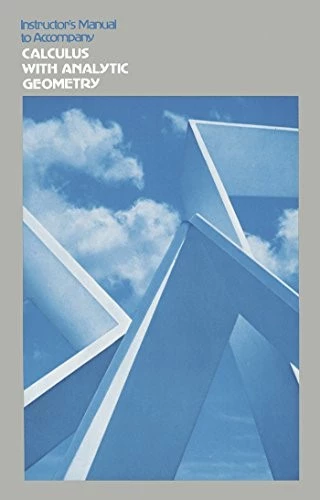
The Instructor’s Guidebook to Accompany Calculus with Analytic Geometry is a manual for calculus with analytic geometry intended for use as an instructor’s guide. It provides solutions to chosen even- and odd-numbered problems and answers to all the even-numbered exercises in the book.
There are also comments on a selection of the exercises. This book has 18 chapters, and the first few give answers and solutions to various tasks that deal with functions and graphs. The next chapter is about derivatives. It covers multiple related issues, including the slope problem, limits, sums and products, quotients and square roots, and continuity and limits.
In the following chapters, topics such as applications of differentiation, exponential and trigonometric functions, methods and applications of integration, inverse functions, and plane analytic geometry are discussed.
The following chapters of this book cover topics such as approximation and convergence, power series, space geometry and vectors, vector functions and curves, higher partials and their applications, double and multiple integrals, and multiple and double integrals. Students studying algebra and mathematics at the undergraduate level will find this book to be a helpful resource.
Calculus Made Easy
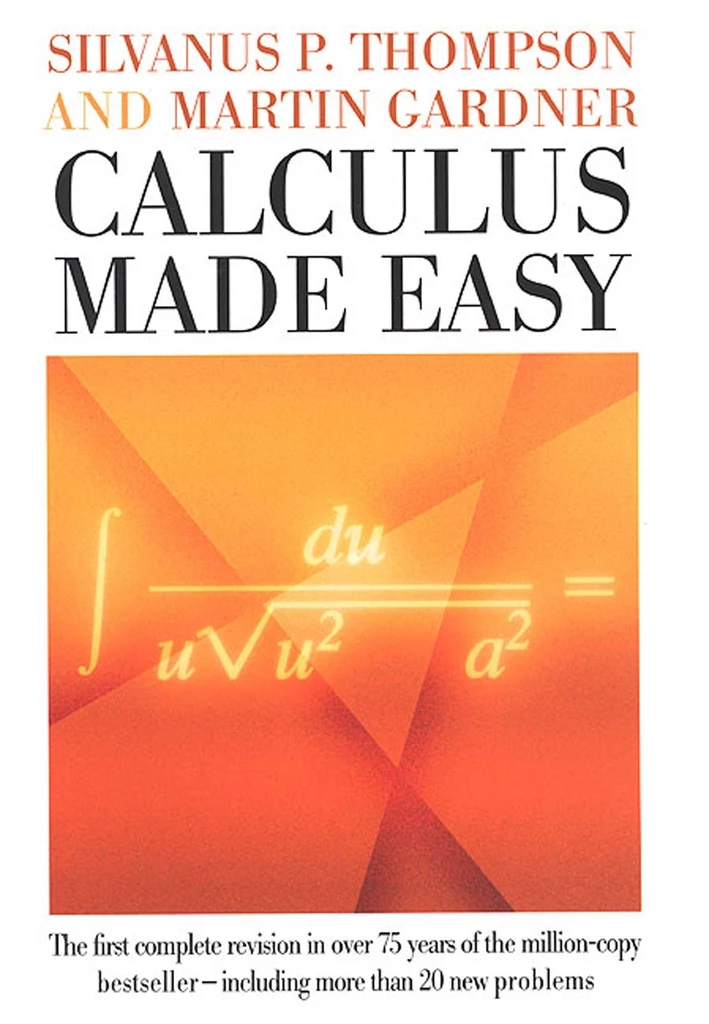
This old book has a condensed explanation of essential calculus and a straightforward introduction to differential and integral calculus. The author of this book set out to write a text to present the fundamentals of calculus in the most detailed and easy-to-understand manner possible.
This book was written specifically for individuals interested in the subject matter but with limited prior knowledge and an understandable reluctance about beginning their calculus journey.
This work is perfect for the student and anybody interested in advancing their mathematical knowledge since it is written in clear, accessible language, is full of helpful information, and offers clear explanations.
